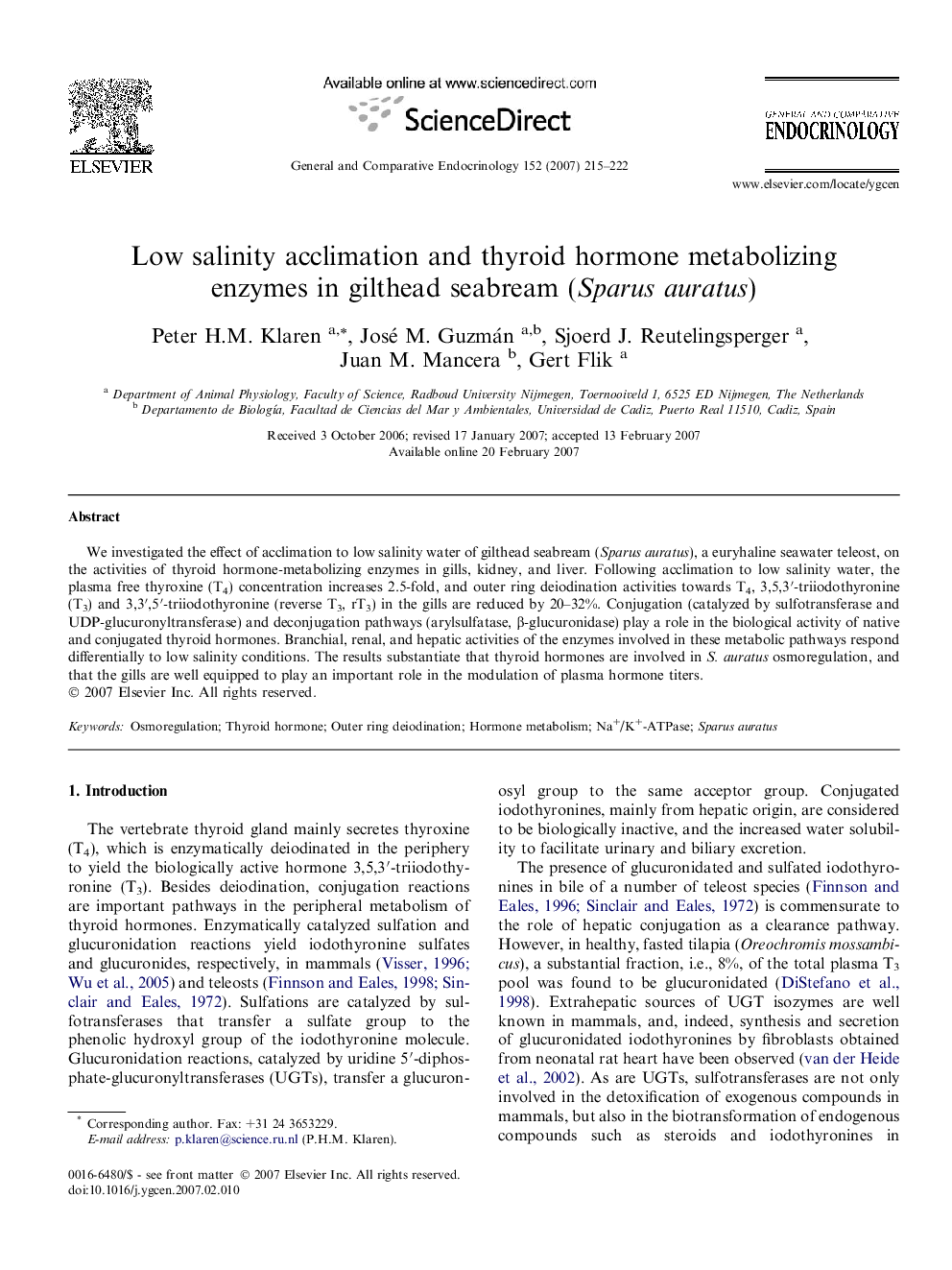| Article ID | Journal | Published Year | Pages | File Type |
|---|---|---|---|---|
| 2801947 | General and Comparative Endocrinology | 2007 | 8 Pages |
Abstract
We investigated the effect of acclimation to low salinity water of gilthead seabream (Sparus auratus), a euryhaline seawater teleost, on the activities of thyroid hormone-metabolizing enzymes in gills, kidney, and liver. Following acclimation to low salinity water, the plasma free thyroxine (T4) concentration increases 2.5-fold, and outer ring deiodination activities towards T4, 3,5,3â²-triiodothyronine (T3) and 3,3â²,5â²-triiodothyronine (reverse T3, rT3) in the gills are reduced by 20-32%. Conjugation (catalyzed by sulfotransferase and UDP-glucuronyltransferase) and deconjugation pathways (arylsulfatase, β-glucuronidase) play a role in the biological activity of native and conjugated thyroid hormones. Branchial, renal, and hepatic activities of the enzymes involved in these metabolic pathways respond differentially to low salinity conditions. The results substantiate that thyroid hormones are involved in S. auratus osmoregulation, and that the gills are well equipped to play an important role in the modulation of plasma hormone titers.
Keywords
Related Topics
Life Sciences
Biochemistry, Genetics and Molecular Biology
Endocrinology
Authors
Peter H.M. Klaren, José M. Guzmán, Sjoerd J. Reutelingsperger, Juan M. Mancera, Gert Flik,
